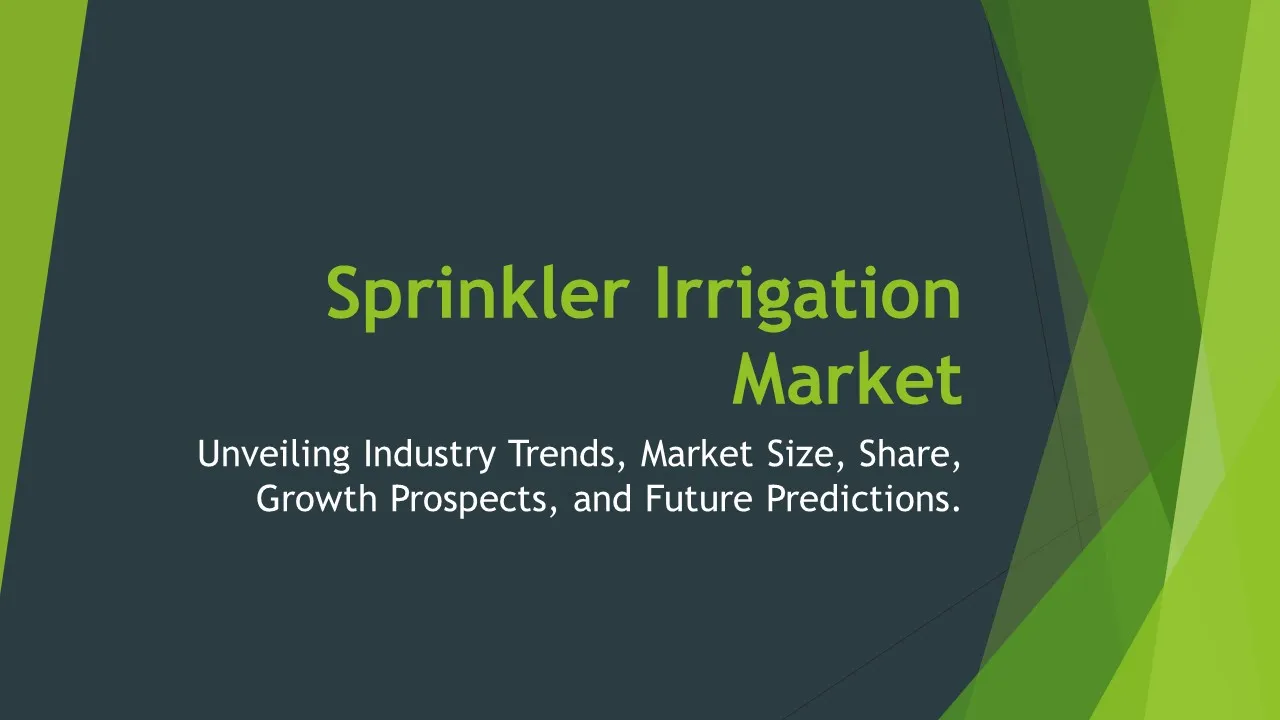Artificial Lawns
Artificial Lawns Market Segments - by Product Type (Polyethylene Artificial Lawns, Polypropylene Artificial Lawns, Nylon Artificial Lawns, Hybrid Artificial Lawns, Recycled Artificial Lawns), Application (Residential Artificial Lawns, Commercial Artificial Lawns, Sports Fields, Parks & Landscaping, Others), Distribution Channel (Online Stores, Home Improvement Stores, Garden Centers, Direct Sales, Others), Material Type (Rubber, Sand, Artificial Turf Infill, Others), Region (North America, Europe, Asia Pacific, Latin America, Middle East & Africa) - Global Industry Analysis, Growth, Share, Size, Trends, and Forecast 2025-2035
- Report Preview
- Table Of Content
- Segments
- Methodology
Artificial Lawns Market Outlook
The global artificial lawns market is projected to reach approximately USD 4.5 billion by 2035, expanding at a compound annual growth rate (CAGR) of around 10.4% during the forecast period from 2025 to 2035. This growth trajectory is driven by an increased awareness of sustainable landscaping solutions, alongside the quest for low-maintenance, water-efficient alternatives to traditional grass lawns. Rising urbanization and a prevalent preference for aesthetically pleasing yet functional outdoor spaces have further accelerated the demand for artificial lawns. Moreover, advancements in technology are leading to more realistic and durable products that can withstand varying environmental conditions. These factors combined are propelling the market forward, making artificial lawns a preferred choice for both residential and commercial applications.
Growth Factor of the Market
Several factors are contributing to the robust growth of the artificial lawns market. Firstly, increasing environmental concerns have led to a greater emphasis on water conservation, with artificial lawns being an ideal solution due to their drought-resistant properties. Secondly, the evolving lifestyle trends, where urban dwellers seek low-maintenance landscaping options, are propelling demand for synthetic grass. Furthermore, the rising popularity of outdoor recreational spaces, such as parks and sports fields, is driving the adoption of artificial lawns, as they provide durability and usability throughout the year. Additionally, technological innovations in manufacturing processes have improved the quality and appeal of synthetic grass, making it an attractive option for consumers. Lastly, favorable government initiatives aimed at promoting sustainable practices are encouraging the adoption of artificial lawns in various sectors.
Key Highlights of the Market
- The market is anticipated to achieve a CAGR of 10.4% from 2025 to 2035.
- Artificial lawns are increasingly recognized for their water conservation properties.
- Technological advancements are enhancing the quality and realism of synthetic grass products.
- Both residential and commercial applications are seeing significant growth in demand.
- Government initiatives promoting sustainable landscaping practices are positively impacting market growth.
By Product Type
Polyethylene Artificial Lawns:
Polyethylene artificial lawns are known for their softness and durability, making them one of the most popular choices among consumers. They offer a realistic look and feel, closely resembling natural grass, which appeals to homeowners and businesses alike. Additionally, polyethylene lawns are UV-resistant, ensuring they maintain their vibrant color even under direct sunlight. This product type is particularly suitable for residential applications, playgrounds, and pet areas, as it provides a comfortable and safe surface for children and pets to play on. The growing demand for eco-friendly landscaping solutions is further catalyzing the uptake of polyethylene artificial lawns.
Polypropylene Artificial Lawns:
Polypropylene artificial lawns are often considered an economical alternative in the synthetic grass market. While they may not offer the same level of durability as polyethylene or nylon options, they are widely used in applications where cost-effectiveness is a priority. These lawns can be found in various settings, including temporary installations and less trafficked areas. They are lightweight and easy to handle, making them a popular choice for small residential projects and decorative landscaping. However, it is important to consider their shorter lifespan, which may necessitate more frequent replacements compared to other materials.
Nylon Artificial Lawns:
Nylon artificial lawns are recognized for their exceptional durability and resilience, making them suitable for high-traffic areas such as sports fields and commercial spaces. Known for their ability to withstand heavy use, nylon lawns maintain their structure and appearance over time, reducing the need for replacement. Additionally, they offer excellent resistance to heat, making them ideal for warmer climates. While they are typically more expensive than other artificial grass options, the long-term savings on maintenance and replacement costs make nylon lawns a valuable investment for many organizations.
Hybrid Artificial Lawns:
Hybrid artificial lawns combine multiple types of fibers, such as polyethylene and nylon, to create a product that benefits from the strengths of each material. This combination allows for a realistic appearance and enhanced durability, catering to a wide range of applications, including sports fields and residential settings. The hybrid approach optimizes performance, offering a balance between softness, resilience, and environmental adaptability. As more consumers seek customized solutions for their landscaping needs, hybrid artificial lawns are gaining traction in the market.
Recycled Artificial Lawns:
Recycled artificial lawns are becoming increasingly popular due to their sustainable manufacturing process, utilizing recycled plastic materials to create high-quality synthetic grass. This not only reduces waste but also appeals to environmentally conscious consumers looking to make a positive impact. Recycled lawns offer similar benefits to traditional artificial grass products, including durability and low maintenance. As sustainability becomes a priority for many sectors, recycled artificial lawns are expected to see significant growth, particularly in commercial landscaping, schools, and public spaces.
By Application
Residential Artificial Lawns:
The residential segment of the artificial lawns market is experiencing substantial growth as homeowners seek low-maintenance alternatives to traditional grass. Synthetic lawns offer a consistent aesthetic appeal without the need for watering, mowing, or fertilizing, making them ideal for busy lifestyles. As urban spaces become more crowded, many homeowners are transforming their outdoor areas into functional and visually appealing spaces using artificial grass. The rising trend of outdoor living spaces, such as patios and gardens, further fuels the demand for residential artificial lawns, as they provide a lush green area for relaxation and entertainment.
Commercial Artificial Lawns:
Commercial artificial lawns are increasingly being adopted by businesses, educational institutions, and public spaces due to their durability and low maintenance requirements. These lawns are commonly used in landscapes, office parks, and recreational facilities, providing a visually appealing and functional solution for outdoor spaces. The ability to withstand heavy foot traffic and extreme weather conditions makes artificial grass a practical choice for commercial applications. Additionally, businesses are increasingly aware of the environmental benefits of synthetic lawns, supporting sustainability initiatives by reducing water consumption and maintenance costs.
Sports Fields:
The use of artificial lawns in sports fields has become a standard practice, driven by the need for consistent playing surfaces that can withstand the rigors of competitive sports. Synthetic grass provides excellent drainage and durability, allowing for year-round play without the concern of mud or uneven terrain. Many professional sports teams and educational institutions are investing in high-quality artificial turf to enhance athlete performance and safety. The growing popularity of sports such as soccer, football, and field hockey is further boosting the demand for artificial lawns in this application, with advancements in technology ensuring that these surfaces meet the highest standards.
Parks & Landscaping:
Parks and landscaping applications represent a significant opportunity for the artificial lawns market. Municipalities and landscape architects are increasingly incorporating synthetic grass into parks, playgrounds, and public spaces to enhance aesthetics while reducing maintenance costs. Artificial lawns provide a green oasis in urban areas, contributing to community well-being and environmental sustainability. The ability of synthetic grass to withstand varying weather conditions and foot traffic makes it a resilient choice for public landscaping projects. As cities continue to expand, the demand for green spaces that require minimal upkeep will likely drive further adoption of artificial lawns in parks and landscaping.
Others:
In addition to the primary applications mentioned, there are several niche markets for artificial lawns, including installation in events, exhibitions, and decorative settings. Temporary installations at events like concerts, festivals, and outdoor gatherings utilize synthetic grass to create appealing venues that are easy to set up and dismantle. Additionally, artificial lawns are being used creatively in interior design, providing a unique touch to homes and commercial spaces. As the versatility of artificial grass continues to be recognized, more innovative applications are expected to emerge, contributing to the overall growth of the market.
By Distribution Channel
Online Stores:
Online stores have become a significant distribution channel for artificial lawns, driven by the convenience and accessibility they offer to consumers. E-commerce platforms allow customers to browse a wide range of products, compare prices, and read reviews from the comfort of their homes. This channel is particularly popular among younger consumers who prefer the ease of online shopping. Additionally, the growing trend of do-it-yourself landscaping projects has increased the demand for artificial grass purchased online. The enhanced customer experience provided by online platforms is likely to continue influencing purchasing decisions in the future.
Home Improvement Stores:
Home improvement stores serve as a critical distribution channel for artificial lawns, offering a variety of products tailored for consumers looking to enhance their outdoor spaces. These retailers provide a hands-on shopping experience, allowing customers to see and feel the product before making a purchase. Home improvement stores often feature knowledgeable staff who can assist customers in selecting the right artificial grass for their specific needs, boosting consumer confidence in their purchases. Additionally, seasonal promotions and marketing strategies within these stores can effectively drive sales and increase market visibility.
Garden Centers:
Garden centers are increasingly incorporating artificial lawns into their product offerings, recognizing the growing consumer demand for synthetic grass solutions. These centers typically cater to gardening enthusiasts and homeowners looking for landscaping options, providing a curated selection of artificial lawns alongside traditional gardening supplies. The knowledgeable staff at garden centers can offer valuable advice on installation techniques and maintenance, promoting informed purchasing decisions. As more consumers seek sustainable landscaping options, garden centers play a vital role in bridging the gap between traditional gardening and innovative synthetic solutions.
Direct Sales:
Direct sales are an essential distribution method for artificial lawns, particularly for larger projects in commercial applications. Many manufacturers and suppliers offer direct sales to businesses, contractors, and landscapers, ensuring tailored solutions that meet specific requirements. This channel often includes personalized consultations, enabling customers to receive professional advice on the best products for their projects. Direct sales not only streamline the purchasing process but also foster strong relationships between suppliers and customers, ultimately improving customer satisfaction and loyalty.
Others:
Other distribution channels for artificial lawns include specialty retailers, landscape contractors, and exhibition showcases. Specialty retailers often focus on niche markets, catering to specific customer preferences and providing unique product offerings that may not be available in larger retail environments. Landscape contractors frequently play a role in the distribution of artificial grass, as they provide installation services and recommend products to their clients. Additionally, exhibition showcases allow manufacturers to present their products to potential buyers, creating an interactive environment for customers to engage with the latest innovations in synthetic grass.
By Material Type
Rubber:
Rubber is often used as a backing material for artificial lawns, providing stability and durability to synthetic grass products. The incorporation of rubber enhances the overall resilience and performance characteristics of artificial lawns, allowing them to withstand the rigors of daily use. Additionally, rubber backing offers excellent shock absorption, making synthetic grass installations safer for children and pets. As safety becomes a top priority in residential and commercial applications, the demand for rubber-backed artificial lawns is expected to grow, particularly in playgrounds and sports facilities.
Sand:
Sand is commonly utilized as an infill material in artificial lawns, serving multiple purposes that enhance the performance and aesthetics of synthetic grass. The infill helps to weigh down the grass fibers, keeping them upright and maintaining a natural appearance. Sand also facilitates drainage, preventing water pooling and ensuring that the lawn remains functional during wet weather conditions. The use of sand infill contributes to the overall durability and longevity of artificial grass, making it a preferred choice for various applications, including sports fields and residential lawns.
Artificial Turf Infill:
Artificial turf infill materials, such as rubber granules or organic alternatives, play a crucial role in maintaining the integrity and functionality of synthetic grass installations. These infills not only provide stability but also enhance the natural feel of the grass, making it more comfortable for users. The choice of infill material can significantly impact the performance of the artificial lawn, affecting factors such as drainage, heat absorption, and overall maintenance requirements. As consumers become more aware of the importance of environmental sustainability, the demand for eco-friendly infill materials is expected to rise, driving innovation within this segment.
Others:
In addition to rubber, sand, and artificial turf infill, various other materials may be used in the manufacturing of artificial lawns, including recycled plastics and textiles. Manufacturers are continually experimenting with innovative materials to enhance the performance and sustainability of their products. For instance, some companies are developing grass fibers made from recycled materials, contributing to the circular economy while providing consumers with eco-friendly options. The versatility of materials used in artificial lawns creates opportunities for customization and differentiation in the market, catering to a diverse range of consumer preferences.
By Region
The North American artificial lawns market is anticipated to dominate the global landscape, accounting for over 35% of the total market share by 2035. This region's growth is propelled by a combination of factors, including the high demand for low-maintenance landscaping solutions, especially in urban areas. Consumer preferences for sustainable living and outdoor aesthetics are further driving the adoption of synthetic grass products. Additionally, the presence of key players and established distribution networks in North America facilitates the availability and promotion of artificial lawns across various applications.
Europe is expected to follow closely, estimated to capture around 30% of the global market share during the same period. The European artificial lawns market is witnessing growth due to a rising emphasis on environmentally friendly landscaping solutions and the increasing popularity of artificial grass in sports facilities and public parks. Countries such as the UK, Germany, and France are leading the way in adopting artificial lawns, supported by favorable government policies promoting sustainable practices. The region is projected to experience a CAGR of approximately 9.8%, driven by innovation and consumer demand for high-quality synthetic grass products.
Opportunities
The artificial lawns market is poised for significant growth due to emerging opportunities in the commercial sector. As businesses continue to prioritize sustainability, synthetic grass presents an attractive solution for creating eco-friendly landscapes. Companies can utilize artificial lawns to enhance their outdoor spaces, reducing water usage and maintenance costs while providing aesthetically pleasing environments for employees and customers. Furthermore, the transition towards green building practices is encouraging the integration of artificial grass in corporate campuses, hotels, and retail spaces, contributing to the overall market expansion. The potential for large-scale commercial projects offers a lucrative avenue for manufacturers and suppliers, enhancing brand visibility and market penetration.
Another promising opportunity lies in the increasing adoption of artificial lawns in residential applications, particularly within urban settings. As more individuals and families seek to maximize their outdoor living spaces, the demand for low-maintenance landscaping solutions is set to rise. Homeowners are increasingly recognizing the benefits of synthetic grass, including its durability and aesthetic appeal, leading to a surge in DIY projects and installations. Manufacturers can capitalize on this trend by offering tailored solutions, including custom sizes and colors, to cater to diverse consumer preferences. Additionally, the growth of online retail channels provides an opportunity for reaching a wider audience, facilitating convenient purchasing options for customers looking to enhance their outdoor spaces.
Threats
While the artificial lawns market shows promising growth potential, it is also facing several threats that could impact its trajectory. One of the main concerns is the increasing scrutiny over the environmental impact of synthetic grass materials, particularly regarding their recyclability and biodegradability. As consumers become more environmentally conscious, there may be a shift in preference towards natural landscaping solutions. Additionally, negative perceptions surrounding the use of artificial lawns, particularly in relation to heat retention and potential health concerns associated with certain materials, could hinder market growth. Manufacturers must remain proactive in addressing these concerns to maintain consumer trust and market relevance.
Moreover, competition within the artificial lawns market is intensifying, with numerous players vying for market share. The entry of low-cost alternatives and imitation products poses a challenge for established brands, as consumers may be tempted to opt for cheaper options without fully understanding the quality and durability differences. This price sensitivity could lead to a potential decrease in profit margins for manufacturers. To counteract this, key players must focus on innovation, product differentiation, and effective marketing strategies that highlight the unique benefits of their offerings, ensuring they remain competitive within this rapidly evolving landscape.
Competitor Outlook
- Everlast Turf
- FieldTurf
- Synlawn
- Horizon Group
- Global Syn-Turf
- Guthrie Green
- EasyTurf
- Royal Grass
- Coastal Synthetic Grass
- GrassTex
- ProGreen
- Artificial Grass Liquidators
- NewGrass
- Faux Grass
- Artificial Lawn Company
The competitive landscape of the artificial lawns market is characterized by an array of prominent players striving to capture market share through innovation and strategic marketing. Companies such as Everlast Turf and FieldTurf have established themselves as leaders in the industry, offering a diverse range of products tailored to both residential and commercial applications. These companies focus on continuous research and development to enhance the quality and performance of their offerings, ensuring they meet the evolving needs of consumers. Additionally, partnerships with landscape architects and contractors play a pivotal role in expanding their reach and establishing brand credibility within the market.
Synlawn is another key player that distinguishes itself through a strong commitment to sustainability and eco-friendly practices. The company offers a variety of products made from recycled materials, appealing to environmentally conscious consumers. By emphasizing sustainability in their marketing strategies, Synlawn aims to capture a growing segment of the market that prioritizes green solutions. Furthermore, the brand's extensive distribution networks and partnerships with home improvement stores enhance its visibility, allowing it to effectively compete against both established and emerging players.
As the artificial lawns market continues to evolve, companies like Global Syn-Turf and EasyTurf are leveraging technological advancements to enhance their product offerings. Innovations in manufacturing processes and materials have enabled these companies to produce synthetic grass that looks and feels more like natural grass, attracting a broader customer base. Their emphasis on quality and performance sets them apart in a competitive market, driving growth and customer loyalty. Overall, the competitive landscape remains dynamic, with established brands and new entrants alike vying for market dominance through innovation, sustainability, and strategic partnerships.
1 Appendix
- 1.1 List of Tables
- 1.2 List of Figures
2 Introduction
- 2.1 Market Definition
- 2.2 Scope of the Report
- 2.3 Study Assumptions
- 2.4 Base Currency & Forecast Periods
3 Market Dynamics
- 3.1 Market Growth Factors
- 3.2 Economic & Global Events
- 3.3 Innovation Trends
- 3.4 Supply Chain Analysis
4 Consumer Behavior
- 4.1 Market Trends
- 4.2 Pricing Analysis
- 4.3 Buyer Insights
5 Key Player Profiles
- 5.1 Synlawn
- 5.1.1 Business Overview
- 5.1.2 Products & Services
- 5.1.3 Financials
- 5.1.4 Recent Developments
- 5.1.5 SWOT Analysis
- 5.2 EasyTurf
- 5.2.1 Business Overview
- 5.2.2 Products & Services
- 5.2.3 Financials
- 5.2.4 Recent Developments
- 5.2.5 SWOT Analysis
- 5.3 GrassTex
- 5.3.1 Business Overview
- 5.3.2 Products & Services
- 5.3.3 Financials
- 5.3.4 Recent Developments
- 5.3.5 SWOT Analysis
- 5.4 NewGrass
- 5.4.1 Business Overview
- 5.4.2 Products & Services
- 5.4.3 Financials
- 5.4.4 Recent Developments
- 5.4.5 SWOT Analysis
- 5.5 ProGreen
- 5.5.1 Business Overview
- 5.5.2 Products & Services
- 5.5.3 Financials
- 5.5.4 Recent Developments
- 5.5.5 SWOT Analysis
- 5.6 FieldTurf
- 5.6.1 Business Overview
- 5.6.2 Products & Services
- 5.6.3 Financials
- 5.6.4 Recent Developments
- 5.6.5 SWOT Analysis
- 5.7 Faux Grass
- 5.7.1 Business Overview
- 5.7.2 Products & Services
- 5.7.3 Financials
- 5.7.4 Recent Developments
- 5.7.5 SWOT Analysis
- 5.8 Royal Grass
- 5.8.1 Business Overview
- 5.8.2 Products & Services
- 5.8.3 Financials
- 5.8.4 Recent Developments
- 5.8.5 SWOT Analysis
- 5.9 Everlast Turf
- 5.9.1 Business Overview
- 5.9.2 Products & Services
- 5.9.3 Financials
- 5.9.4 Recent Developments
- 5.9.5 SWOT Analysis
- 5.10 Guthrie Green
- 5.10.1 Business Overview
- 5.10.2 Products & Services
- 5.10.3 Financials
- 5.10.4 Recent Developments
- 5.10.5 SWOT Analysis
- 5.11 Horizon Group
- 5.11.1 Business Overview
- 5.11.2 Products & Services
- 5.11.3 Financials
- 5.11.4 Recent Developments
- 5.11.5 SWOT Analysis
- 5.12 Global Syn-Turf
- 5.12.1 Business Overview
- 5.12.2 Products & Services
- 5.12.3 Financials
- 5.12.4 Recent Developments
- 5.12.5 SWOT Analysis
- 5.13 Artificial Lawn Company
- 5.13.1 Business Overview
- 5.13.2 Products & Services
- 5.13.3 Financials
- 5.13.4 Recent Developments
- 5.13.5 SWOT Analysis
- 5.14 Coastal Synthetic Grass
- 5.14.1 Business Overview
- 5.14.2 Products & Services
- 5.14.3 Financials
- 5.14.4 Recent Developments
- 5.14.5 SWOT Analysis
- 5.15 Artificial Grass Liquidators
- 5.15.1 Business Overview
- 5.15.2 Products & Services
- 5.15.3 Financials
- 5.15.4 Recent Developments
- 5.15.5 SWOT Analysis
- 5.1 Synlawn
6 Market Segmentation
- 6.1 Artificial Lawns Market, By Application
- 6.1.1 Residential Artificial Lawns
- 6.1.2 Commercial Artificial Lawns
- 6.1.3 Sports Fields
- 6.1.4 Parks & Landscaping
- 6.1.5 Others
- 6.2 Artificial Lawns Market, By Product Type
- 6.2.1 Polyethylene Artificial Lawns
- 6.2.2 Polypropylene Artificial Lawns
- 6.2.3 Nylon Artificial Lawns
- 6.2.4 Hybrid Artificial Lawns
- 6.2.5 Recycled Artificial Lawns
- 6.3 Artificial Lawns Market, By Material Type
- 6.3.1 Rubber
- 6.3.2 Sand
- 6.3.3 Artificial Turf Infill
- 6.3.4 Others
- 6.4 Artificial Lawns Market, By Distribution Channel
- 6.4.1 Online Stores
- 6.4.2 Home Improvement Stores
- 6.4.3 Garden Centers
- 6.4.4 Direct Sales
- 6.4.5 Others
- 6.1 Artificial Lawns Market, By Application
7 Competitive Analysis
- 7.1 Key Player Comparison
- 7.2 Market Share Analysis
- 7.3 Investment Trends
- 7.4 SWOT Analysis
8 Research Methodology
- 8.1 Analysis Design
- 8.2 Research Phases
- 8.3 Study Timeline
9 Future Market Outlook
- 9.1 Growth Forecast
- 9.2 Market Evolution
10 Geographical Overview
- 10.1 Europe - Market Analysis
- 10.1.1 By Country
- 10.1.1.1 UK
- 10.1.1.2 France
- 10.1.1.3 Germany
- 10.1.1.4 Spain
- 10.1.1.5 Italy
- 10.1.1 By Country
- 10.2 Asia Pacific - Market Analysis
- 10.2.1 By Country
- 10.2.1.1 India
- 10.2.1.2 China
- 10.2.1.3 Japan
- 10.2.1.4 South Korea
- 10.2.1 By Country
- 10.3 Latin America - Market Analysis
- 10.3.1 By Country
- 10.3.1.1 Brazil
- 10.3.1.2 Argentina
- 10.3.1.3 Mexico
- 10.3.1 By Country
- 10.4 North America - Market Analysis
- 10.4.1 By Country
- 10.4.1.1 USA
- 10.4.1.2 Canada
- 10.4.1 By Country
- 10.5 Artificial Lawns Market by Region
- 10.6 Middle East & Africa - Market Analysis
- 10.6.1 By Country
- 10.6.1.1 Middle East
- 10.6.1.2 Africa
- 10.6.1 By Country
- 10.1 Europe - Market Analysis
11 Global Economic Factors
- 11.1 Inflation Impact
- 11.2 Trade Policies
12 Technology & Innovation
- 12.1 Emerging Technologies
- 12.2 AI & Digital Trends
- 12.3 Patent Research
13 Investment & Market Growth
- 13.1 Funding Trends
- 13.2 Future Market Projections
14 Market Overview & Key Insights
- 14.1 Executive Summary
- 14.2 Key Trends
- 14.3 Market Challenges
- 14.4 Regulatory Landscape
Segments Analyzed in the Report
The global Artificial Lawns market is categorized based on
By Product Type
- Polyethylene Artificial Lawns
- Polypropylene Artificial Lawns
- Nylon Artificial Lawns
- Hybrid Artificial Lawns
- Recycled Artificial Lawns
By Application
- Residential Artificial Lawns
- Commercial Artificial Lawns
- Sports Fields
- Parks & Landscaping
- Others
By Distribution Channel
- Online Stores
- Home Improvement Stores
- Garden Centers
- Direct Sales
- Others
By Material Type
- Rubber
- Sand
- Artificial Turf Infill
- Others
By Region
- North America
- Europe
- Asia Pacific
- Latin America
- Middle East & Africa
Key Players
- Everlast Turf
- FieldTurf
- Synlawn
- Horizon Group
- Global Syn-Turf
- Guthrie Green
- EasyTurf
- Royal Grass
- Coastal Synthetic Grass
- GrassTex
- ProGreen
- Artificial Grass Liquidators
- NewGrass
- Faux Grass
- Artificial Lawn Company
- Publish Date : Jan 21 ,2025
- Report ID : CO-27583
- No. Of Pages : 100
- Format : |
- Ratings : 4.5 (110 Reviews)
Related reports









